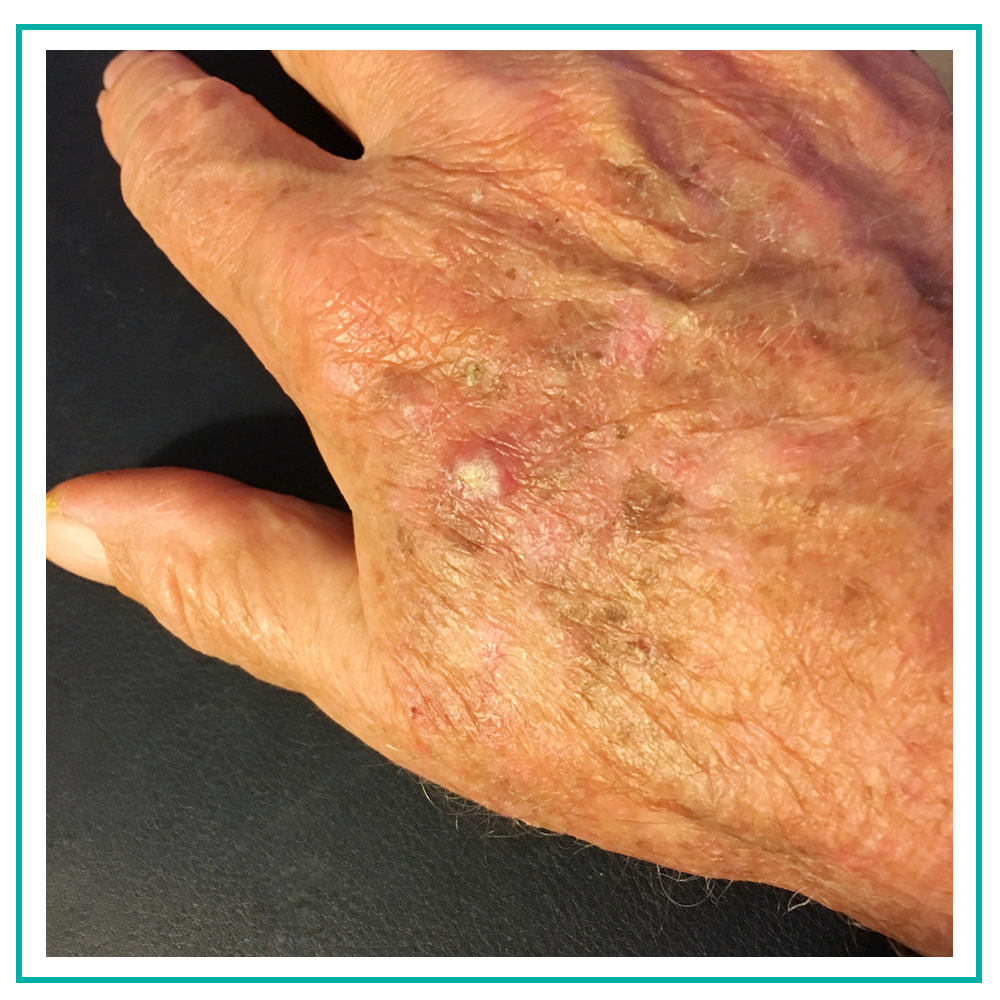About Actinic Keratosis
An actinic keratosis is a precancerous skin lesion that affects only the uppermost layer of the skin. It appears as a small, rough or scaly patch of skin.
What causes Actinic Keratosis?
Long term exposure to sunlight causes Actinic Keratosis. Chronic sunlight exposure alters the keratinocytes (cells in the outer layer of skin), causing the skin to become scaly, rough, discolored and sometimes tender to touch.
The lesions most commonly appear on skin areas most exposed to sunlight, such as the face, lips, ears, neck, scalp, forearms and back of the hands.
People who have fair skin and light-colored hair and eyes are at greatest risk of developing Actinic Keratosis. Others who are at higher risk include individuals who are immunosuppressed and who have an immunodeficiency disorder.
Actinic Keratosis is not life threatening if diagnosed and treated in the early stages. If left untreated, Actinic Keratosis have the potential to progress into squamous cell carcinoma, a serious form of skin cancer. So, it’s very important to report any suspicious skin lesions to your doctor.
Many times Actinic Keratosis is diagnosed by clinical appearance. However, sometimes your doctor performs a skin biopsy. Your treatment will vary based on the location, size and amount of lesions. Your doctor will also consider your age and overall health condition.
In addition to seeing one of our board-certified dermatologists or certified PAs for an individualized treatment and prevention plan, we recommend the following:
- Stay out of the sun between 10 AM and 4 PM.
- Wear protective clothing such as a broad-brimmed hat, long sleeve shirts, and pants made from fabric that has an ultraviolet protection factor (UPF).
- Apply a broad-spectrum sunscreen with an SPF of 30 or higher to all exposed skin every day, even on cloudy or winter days. Reapply your sunscreen at least every 2 hours while outdoors, or after sweating, swimming, or toweling off.
- Wear a lip balm with an SPF of 30 or higher to protect your lips.
- Avoid tanning salons and artificial tanning devices.
- Regularly inspect your entire body for any skin changes.
- Routinely visit your doctor/PA for a skin examination.
- One in six people develop Actinic Keratosis in their lifetime.
- Older people are more likely to develop Actinic Keratosis since cumulative sun exposure increases with age.
- Patients with Actinic Keratosis have a lifetime risk of 5-9% of progression to squamous cell carcinoma.


